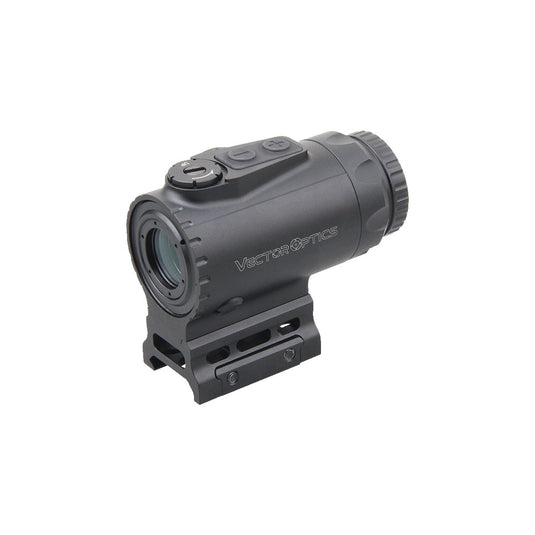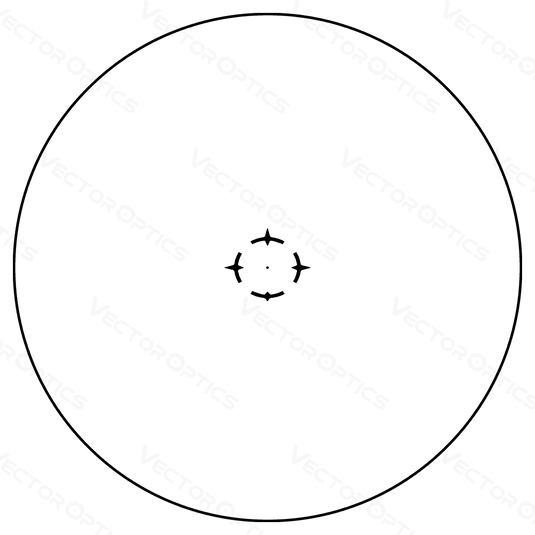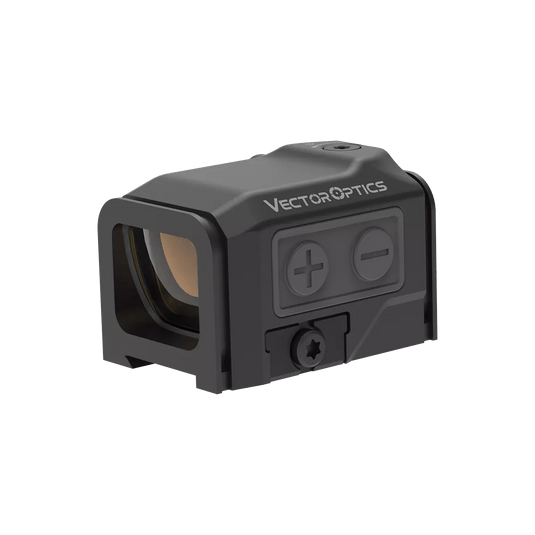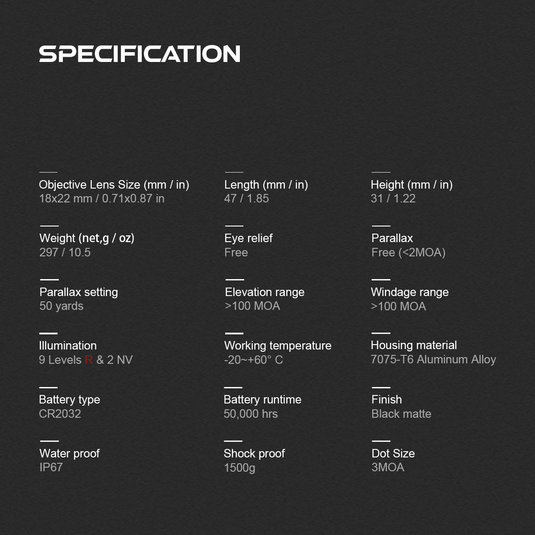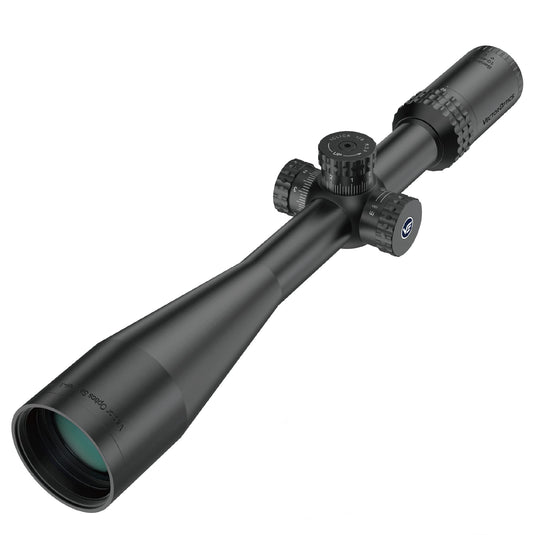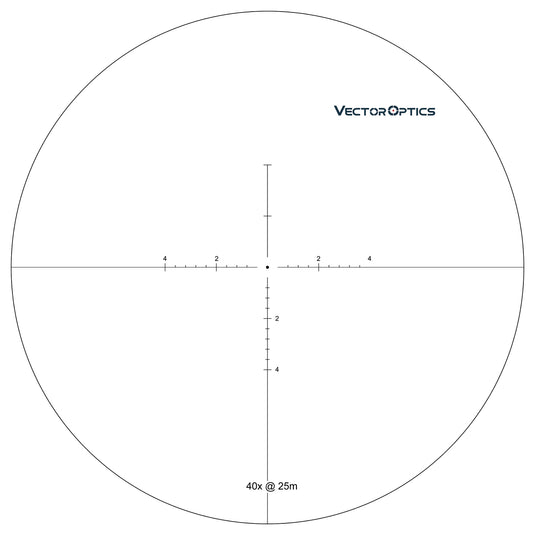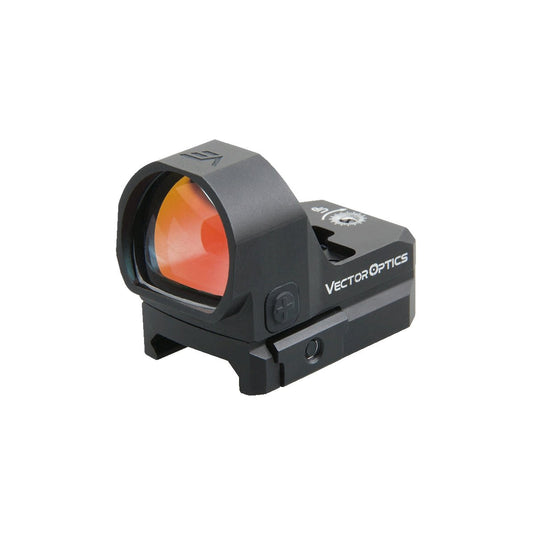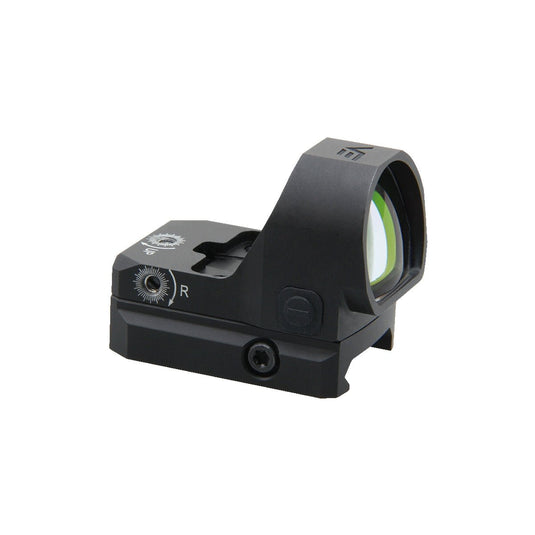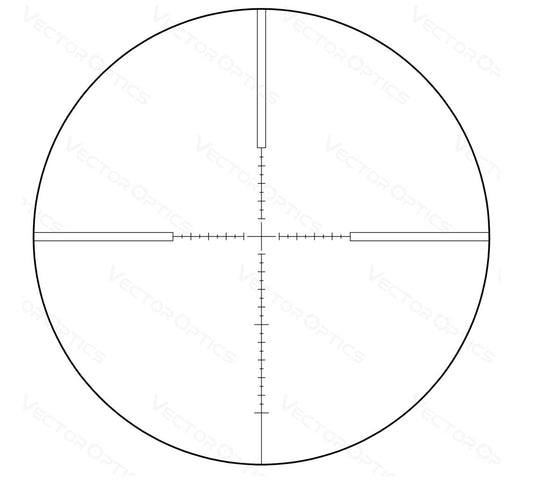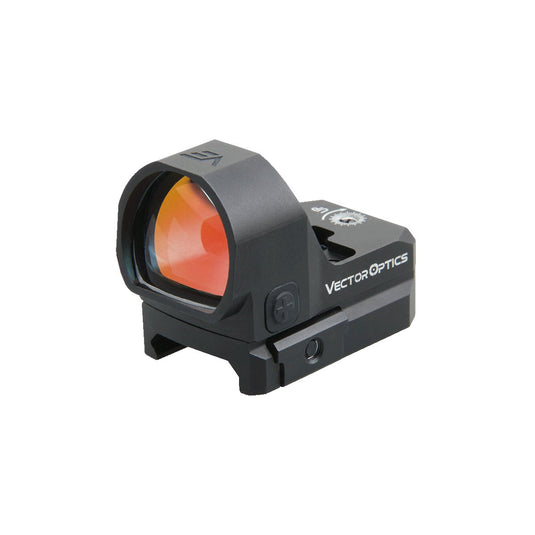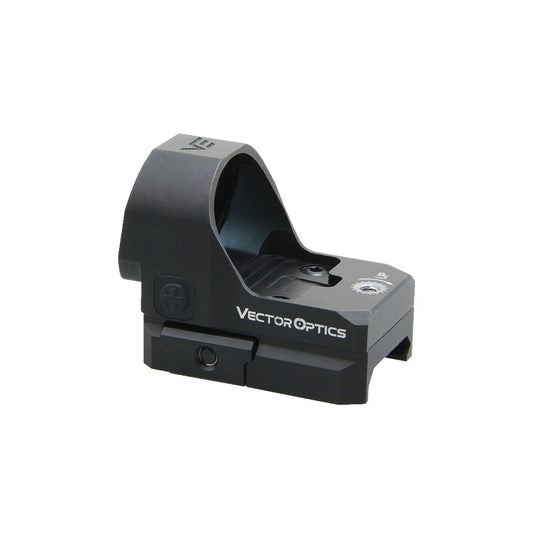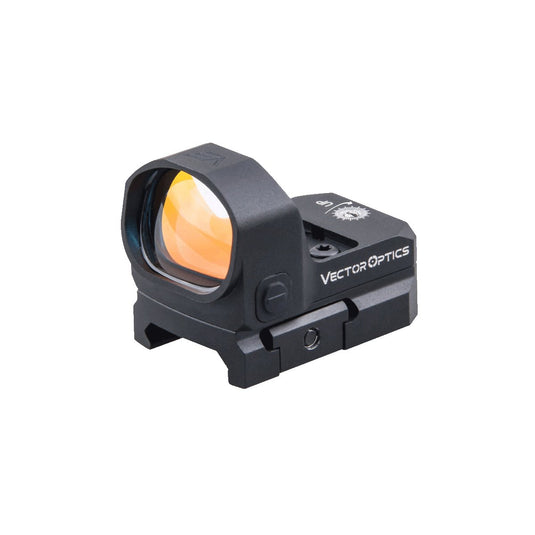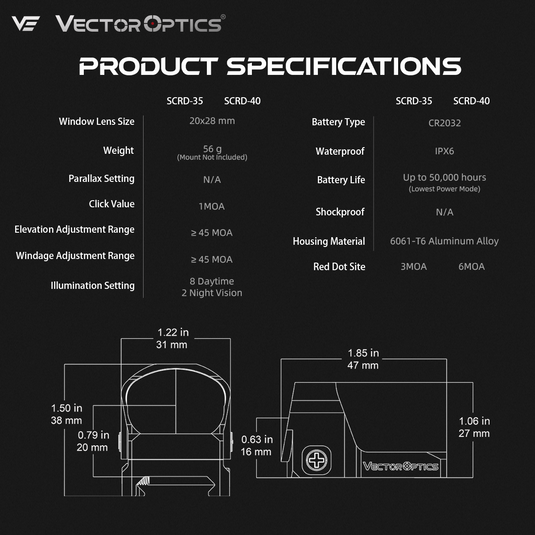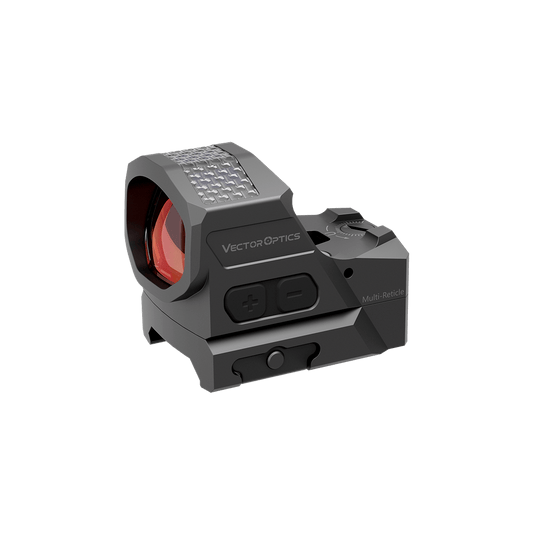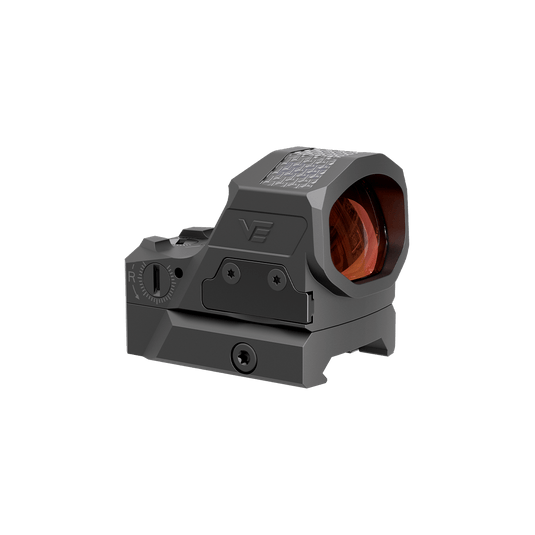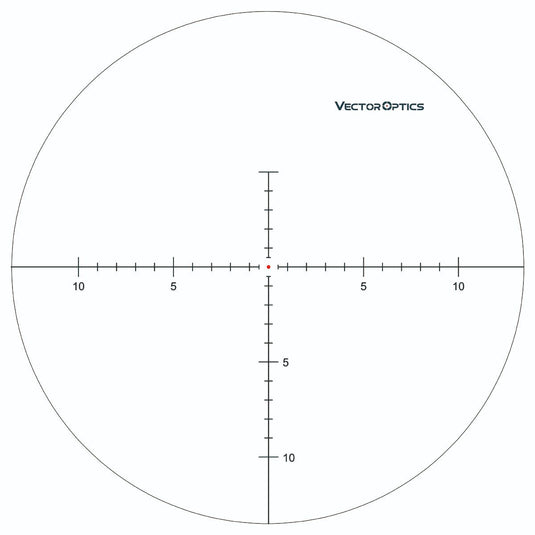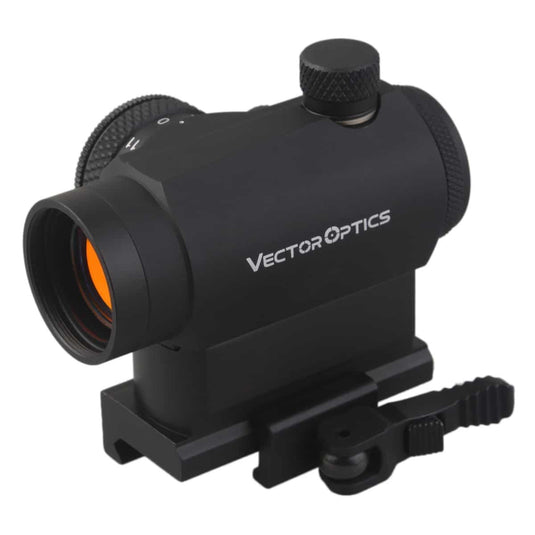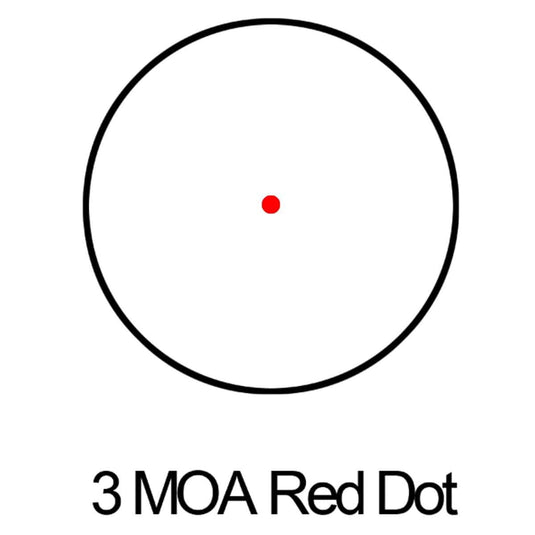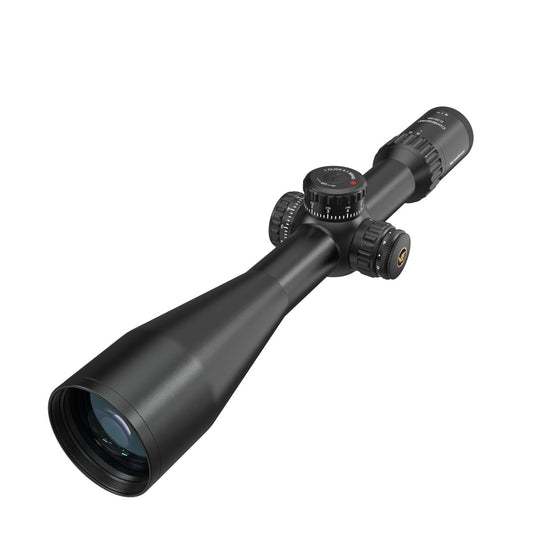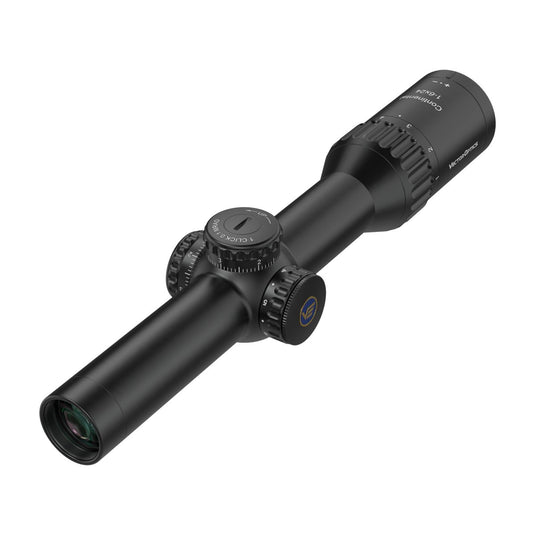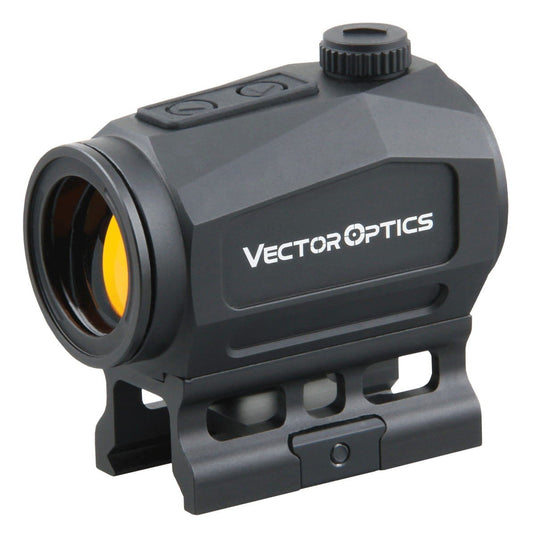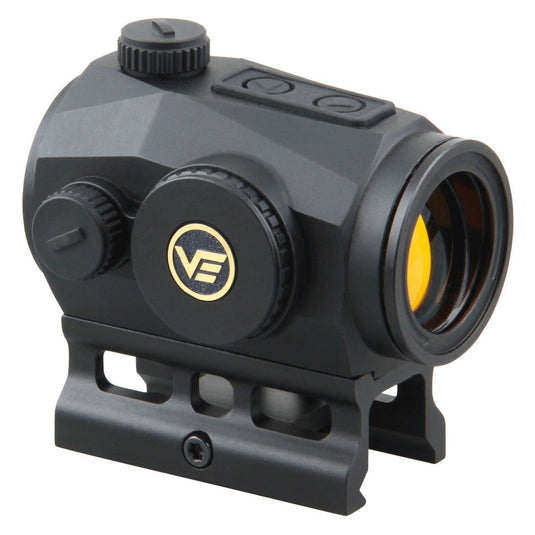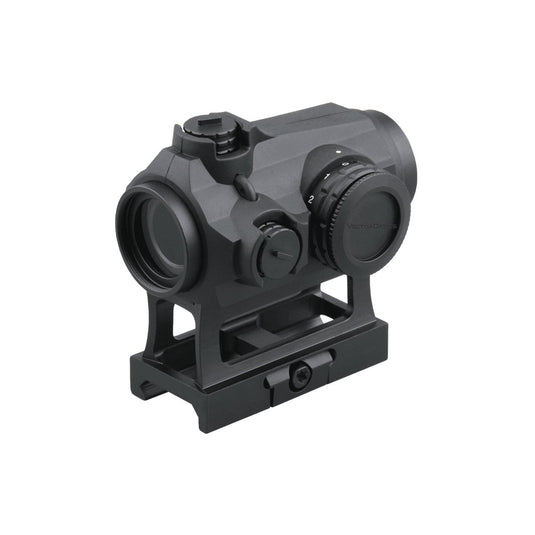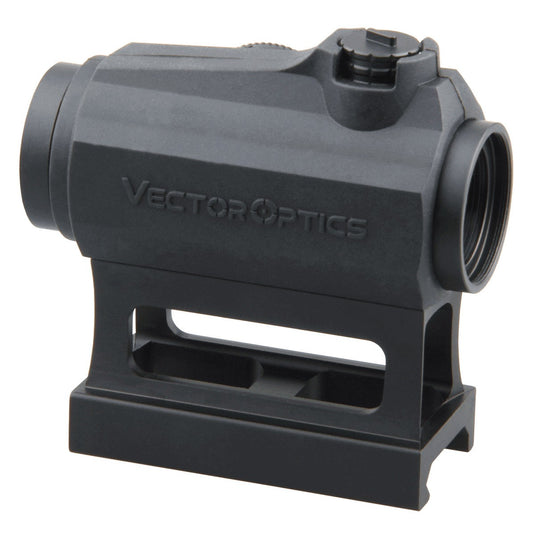1x prism scope and red dot sight both could improve the accuracy of close-range shooting. The prism scope was developed to solve the problem of red dot sight, while the advantages always come along with the disadvantages.
Prism scope's reticle can be more complicated than that on red dot
Red dot's reticle typically features a simple reticle consisting of an aiming point, a ring, and crosshairs. Prism scopes could realize more complex reticles with bullet drop compensation(BDC). VE's 3x, 4x prism scopes, SCPS-M03, SCPS-M04, possess comprehensive reticles for both distance estimation and bullet drop compensation for precise shooting during middle and long-distance shooting.
Besides, prism scope can realize 1MOA center dot with a relatively low cost compared to that of red dot. Most red dots on the market feature 3MOA center dot. VE's Maverick-II Plus red dots stand out from the market, SCRD-PS12 and SCRD-PD12, are with a 2MOA center dot.
Usually, the prism scope (near the eyes) is placed after the magnifier to realize the second focal plane configuration. The setup maintains the reticle's size while magnifying the target improve accuracy. Check the images below.



In rare cases, the prism scope can be placed before the magnifier to get the first focal plane configuration. To realize it, the prism scope should provide an ultra-long eye relief, which is larger than the sum of the prism scope length and its eye relief.
Check the video here if you are interested in it.
The red dot usually positions before the magnifier. The target and reticle will be magnified simultaneously.

Original 2MOA pattern with the target

The reticle and the target zoom in 3 times

The reticle and the target zoom in 5 times
Prism scope is more user-friendly, compared to red dot, for people with eye issues.
When people have astigmatism, they see the red dot's reticle like a starburst, or even worse, they see a ghost red dot under bright daylight.
Meanwhile, the prism scope implements other optical designs. It shortens the optical pathways through roof prisms. The light from the rear side of the optics will refract on the prisms to reach the objective lens and show a crisp and clear illuminated aiming point. As we mentioned earlier, the prism scope can realize 1MOA center dot, which will maintain sharp even when turning up the illumination.
Also, the reticle was etched on the prism scope glass. Even if the illumination fails, shooters can still rely on the etched reticle for targeting. Additionally, the prism scope features an adjustable ocular ring, which allows people with near eyesight or far eyesight to customize their sight view. Therefore, the complete image quality of sight view and the reticle pattern on the prism scope appears better than that of red dot.
Prism scope needs an eye relief, while red dot has infinite eye relief of red dot for rapid target acquisition
Red dots excel in rapid target acquisition due to their infinite eye relief, providing a clear sight picture regardless of the distance between your eye and the red dot. Conversely, concerning prism scope, shooters will need to find eye relief, and the eyes have to be located within the eye box area to get a clear sight view. Though you have eye box limitation, shooters would get a larger field of view via a prism scope than that via a red dot. Currently, VE Paragon prism scope 1x16, SCPS-M01, and SCPS-M10 (with the same reticle as the M01), and realizes true 1x, enabling shooting with two eyes open, increasing your field of vision.
Check the video to learn more about prism scope with true 1x power.
Paragon prism scope 1x16, SCPS-M01
As the magnification increases, the eye box would be more and more narrow. Therefore, shooters don't need to worry about the eye box too much, when they are using a 1x prism scope.
Another difference is the size and weight, the red dot usually features a more compact size. Prism scopes tend to be larger and heavier compared to red dots.
To summarize, which one to pick depends on your specific shooting scenarios and preferences. If you have eye issues and require precise target acquisition at medium-range shooting distances, prism scopes may be the better choice. On the other hand, if you do not have serious eye issues and prioritize rapid target acquisition at close-range shooting distances, a red dot may be more suitable for your needs. Last but not least, prism scopes are usually more costly than red dots.




